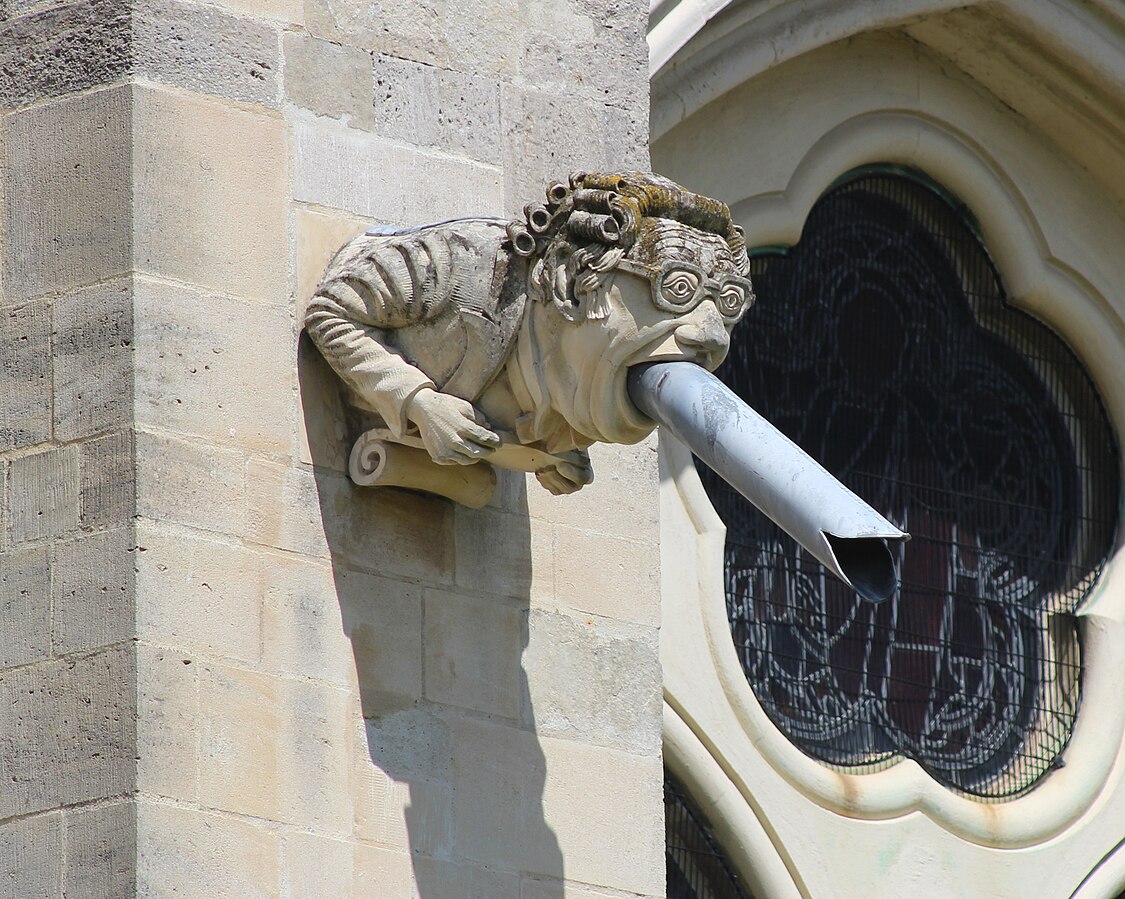Keep the building water tight#
If a building isn’t watertight there’s little point in energy efficiency upgrades, according to Historic Environment Scotland. Damp buildings have higher heat loss and also feel less comfortable to the people who use them. If a building gets so damp it need extensive repair or replacement, this has a huge carbon cost.

(c) Martinvl, CC BY-SA 4.0 https://creativecommons.org/licenses/by-sa/4.0, via Wikimedia Commons
This means making sure the roof doesn’t leak and keeping an eye on the gutters (in Scotland, “rhones”), downpipes, and gargoyles. They need regular maintenance to keep them clear of debris, and any hairline cracks can cause major problems if they aren’t repaired. Climate change means many buildings are already having to make changes to the sizes of their rainwater clearance devices to cope with heavier rainfall.
It also means keeping the pointing on your building in good shape using the correct mortar. Traditional buildings need breatheable lime mortar, not cement, to release moisture from the stone or brick, avoiding damp and damage to the stonework. Not all people willing to do the job know how to do it properly - we’ve seen some mix lime mortar with PVA glue.
Finally, you need sufficient ventilation in your building to clear the moisture generated by its users. In traditional buildings, it’s very common to find the ventilation features blocked up. Sometimes this is on purpose to stop heat loss and sometimes it’s, for instance, leaf litter blocking air intakes at ground level on the outside of the building. If you’re having a problem with damp but are worried about the heat loss that comes with ventilation, also look at the ventilation and heat recovery extractor fan cards.


